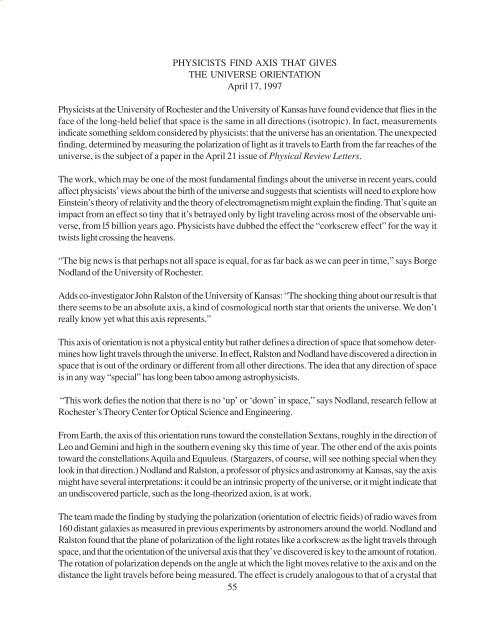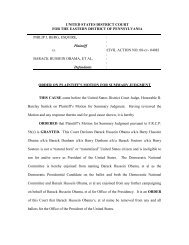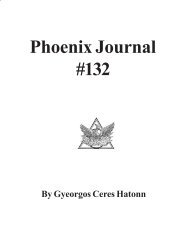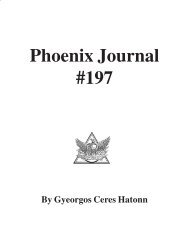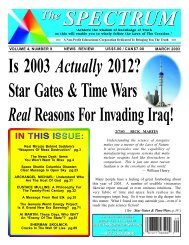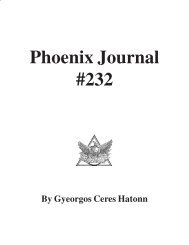Phoenix Journal 208 - Four Winds 10
Phoenix Journal 208 - Four Winds 10
Phoenix Journal 208 - Four Winds 10
You also want an ePaper? Increase the reach of your titles
YUMPU automatically turns print PDFs into web optimized ePapers that Google loves.
PHYSIClSTS FIND AXIS THAT GlVES<br />
THE UNlVERSE ORlENTATlON<br />
April 17, 1997<br />
Physicists at the University of Rochester and the University of Kansas have found evidence that flies in the<br />
face of the long-held belief that space is the same in all directions (isotropic). In fact, measurements<br />
indicate something seldom considered by physicists: that the universe has an orientation. The unexpected<br />
finding, determined by measuring the polarization of light as it travels to Earth from the far reaches of the<br />
universe, is the subject of a paper in the April 21 issue of Physical Review Letters.<br />
The work, which may be one of the most fundamental findings about the universe in recent years, could<br />
affect physicists’ views about the birth of the universe and suggests that scientists will need to explore how<br />
Einstein’s theory of relativity and the theory of electromagnetism might explain the finding. That’s quite an<br />
impact from an effect so tiny that it’s betrayed only by light traveling across most of the observable universe,<br />
from l5 billion years ago. Physicists have dubbed the effect the “corkscrew effect” for the way it<br />
twists light crossing the heavens.<br />
“The big news is that perhaps not all space is equal, for as far back as we can peer in time,” says Borge<br />
Nodland of the University of Rochester.<br />
Adds co-investigator John Ralston of the University of Kansas: “The shocking thing about our result is that<br />
there seems to be an absolute axis, a kind of cosmological north star that orients the universe. We don’t<br />
really know yet what this axis represents.”<br />
This axis of orientation is not a physical entity but rather defines a direction of space that somehow determines<br />
how light travels through the universe. In effect, Ralston and Nodland have discovered a direction in<br />
space that is out of the ordinary or different from all other directions. The idea that any direction of space<br />
is in any way “special” has long been taboo among astrophysicists.<br />
“This work defies the notion that there is no ‘up’ or ‘down’ in space,” says Nodland, research fellow at<br />
Rochester’s Theory Center for Optical Science and Engineering.<br />
From Earth, the axis of this orientation runs toward the constellation Sextans, roughly in the direction of<br />
Leo and Gemini and high in the southern evening sky this time of year. The other end of the axis points<br />
toward the constellations Aquila and Equuleus. (Stargazers, of course, will see nothing special when they<br />
look in that direction.) Nodland and Ralston, a professor of physics and astronomy at Kansas, say the axis<br />
might have several interpretations: it could be an intrinsic property of the universe, or it might indicate that<br />
an undiscovered particle, such as the long-theorized axion, is at work.<br />
The team made the finding by studying the polarization (orientation of electric fieids) of radio waves from<br />
160 distant galaxies as measured in previous experiments by astronomers around the world. Nodland and<br />
Ralston found that the plane of polarization of the light rotates like a corkscrew as the light travels through<br />
space, and that the orientation of the universal axis that they’ve discovered is key to the amount of rotation.<br />
The rotation of polarization depends on the angle at which the light moves relative to the axis and on the<br />
distance the light travels before being measured. The effect is crudely analogous to that of a crystal that<br />
55


